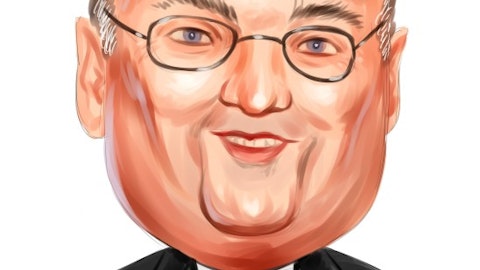Bruce Kovner founded Caxton Associates in 1983 and the fund’s remarkable performance since then- it’s been particularly consistent in limiting periods of negative return- has given Kovner a net worth of $4.5 billion. The fund has been managed by Andrew Law since 2008. In November, Caxton filed its 13F with the SEC and thus reported many of its long equity positions that it had owned at the end of September to the general public. See the fund’s holdings or read on for our analysis of its five largest equity positions.
Caxton made a big move over the course of the quarter by moving heavily into one of the hottest stocks in the market among hedge funds- American International Group, Inc. (NYSE:AIG). AIG rocketed onto our list of the ten most popular stocks among hedge funds as 110 funds and other notable investors in our database of 13F filings reported a position. A number of investors are likely still sour on AIG for blowing up during the financial crisis, with skepticism of the stock leading to a P/B of 0.5 and a forward P/E of 9 despite substantial growth. We’re with the hedge funds on this one- AIG looks like it is undervalued.
The fund also bought Wells Fargo & Company (NYSE:WFC), which is known as Warren Buffett’s favorite bank stock. Find more of Berkshire Hathaway’s top stock picks. While many other bank stocks have been up strongly in the last few months, Wells Fargo is about flat since the end of May; Bank of America Corp (NYSE:BAC), Citigroup, and JPMorgan Chase have all risen at least 20% over the same period. This has left Wells Fargo’s P/E multiples at a fairly low premium to these weaker banks, though the bank’s P/B ratio is still 1.2. It’s a tough call for us- JPMorgan Chase seems slightly cheaper, and Citi even lower priced, but those banks’ business performance seems about in line with their multiples.
We hadn’t considered Bank of America to be as good a buy as those three- its earnings multiples certainly aren’t great relative to its peers, and earnings have collapsed recently- but it had been another of Caxton’s top picks. Bank of America trades at 10 times forward earnings estimates, and while its P/B is very low at 0.5 we can’t help but notice the 26% decline in revenue that the bank took last quarter compared to the third quarter of 2011. The company was only barely profitable for the quarter as well. Until the company is better able to monetize its assets, we think that JPMorgan Chase, Citi, and Wells Fargo would be better for an investor’s portfolio.
Regions Financial Corporation (NYSE:RF), a regional bank which primarily operates in the Southeastern U.S., is rebounding strongly from the aftereffects of the financial crisis. Its net income nearly doubled in the third quarter of 2012 compared to a year earlier, with revenue up strongly as well. Even with a 59% gain in the stock price over the last year, the P/B ratio here is only 0.6. Caxton owned 6 million shares at the end of September, nearly triple what it had at the beginning of July. We’d be interested in taking a closer look at the company.
Finishing out the pattern of financial stocks at the top of the fund’s portfolio was Synovus Financial Corp. (NYSE:SNV); Caxton reported a position of 14 million shares in the $1.8 billion market cap regional bank (which, like Regions, is concentrated in the Southeast). Synovus’s earnings have actually been about flat, and its market cap is much closer to the book value of its equity with a P/B of 0.9. It looks to us like whether or not Regions is a good deal, it is a better buy than Synovus.





